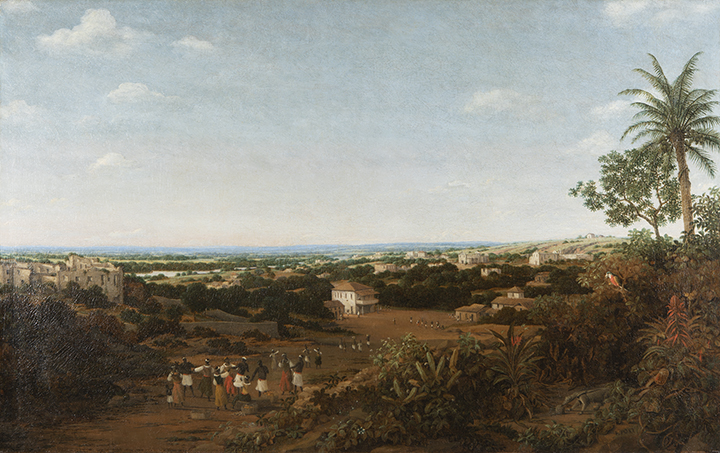
Frans Jansz. Post (Dutch, ca. 1612–1680), Village of Olinda, Brazil, ca. 1660, oil on canvas, 32 ½ x 51 ½ in., gift of Charles R. Crane, 13.1.16
One of the paintings that interests me most in the Chazen collection is Village of Olinda, Brazil by the Dutch artist Frans Jansz. Post. In 1636, Post traveled to the Dutch colony of northeast Brazil in the entourage of its governor, Count Johan Maurits of Nassau-Siegen. The artists and naturalists who traveled with Maurits were commissioned to document the landscapes, plants, animals, and daily life. In the foreground of the painting, Post included highly detailed depictions of plants and animals, including an anteater, satisfying the Dutch interest in the foreign flora and fauna. In fact, botanists have identified all the plants represented in the painting.
The plants and animals serve as a foreground framing device, or repoussoir, intended to lead the viewer’s eye into the composition. Here, the viewer is guided to see the village of Olinda populated by groups of enslaved Africans, most of whom seem to be enjoying leisure time. Olinda was a center of sugarcane production, which involved backbreaking labor to harvest and process the sugarcane for export. Enslaved Africans, forcibly brought to Brazil by European traders, labored on the plantations and mills. However, there is no trace of hard labor in this scene. Instead, the enslaved figures nearly become a part of the landscape as they dance and walk, lacking the individual features that characterize the plants and animals in the foreground. Their presence is therefore “naturalized” as Post portrays Brazil as a peaceful, bountiful colony. It is important to think about how aesthetically pleasing paintings and landscapes like this one contributed to the European and Euro-American rationalization for slavery and the slave trade.
—Janine Yorimoto Boldt, Associate Curator of American Art